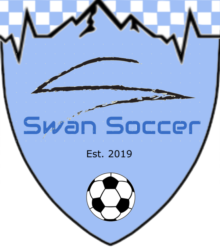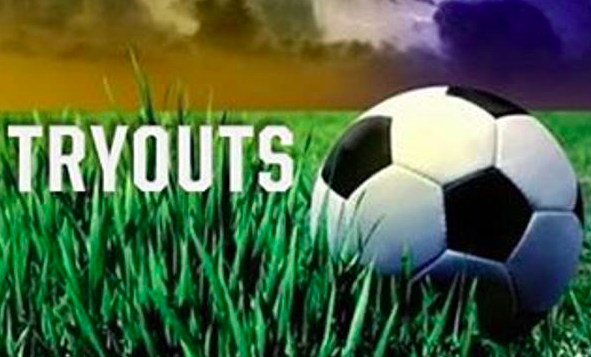
Starting With “The Tryout” Lack of Knowledge of Pedagogy at Soccer Clubs Stifles Talent. Soccer clubs need to follow clear models of developmental best practices
Academy organization needs to be founded on proven educational practices such as scaffolding, peer learning to bridge the gaps between player talent, and create a healthy and inclusive learning environment. This means that for middle childhood ages, The United States’ soccer tradition of a mass tryout followed by cuts is a pastime that needs to long be forgotten.
This past week I contacted a local club to see if a player could simply practice with one their 3 travel teams. Their response was, “Unfortunately we cannot have players join and just practice. Our teams have been in place since the last tryout cycle. ” The club does offer a Saturday kick-around where the club states,
“The kids play pick up style soccer for an hour on Saturday afternoons…We mix them up and play. There is no set teams and no set coaches involved other than parents monitoring the field to be sure everything is okay, everyone takes a break for water, etc. We really just want them to play and have fun. We get all levels of players although we don’t really see travel level players doing this program since they are already practicing with their teams multiple days a week.”
Considering that scaffolding through peer interaction is the best form of knowledge acquisition why aren’t the Saturday players invited to the travel practices?
As a private club, you are allowed to have your rules. However soccer clubs are also servants to the community and use public land to do business, and therein have the responsibility to provide services. Moreover, by just catering to the travel teams and the revenue that they bring, they may be missing out on the player who hasn’t been able to afford to play travel. Also, with the education that these coaches and directors have, arguably they also have an academic responsiblity to serve everyone in the club.
These local clubs should reconsider its player development model and look into providing greater opportunities to the public. Quite possibly even taking a business approach and either joining forces with the local businesses like Just 4 Keepers or Total Soccer or consider taking a greater role in providing opportunities to compete. These companies wouldn’t exist if there wasn’t a market. Fortunately though, some clubs are getting smart enough to outsource coaching to these businesses. Unfortunately, most are not wising up to providing services and good ideas to do so are being tied up in the quasi bureaucracy of the Soccer Club Boards.
Tryouts seem to come way too far apart for kids at such a young age too. The last “tryout cycle” was August 2016. In that timeframe a 9 year-old may grow 2 inches and start reading novels. How is a one-year “cycle” developmentaly appropriate? When do clubs get to see players at different stages of development interact if they do not allow players to join practices and also separates development levels for so long. When kids are developing so fast both physiologically and psychologically, and not necessarily both at the same time, there is a greater need for constant assessment at the individual level — Education 101.
In a conversation with a friend of mine that coaches for a senior USL team, we discussed the issue of the “tryout cycles” format when I noticed that his club was having tryouts for the professional team. Having just returned from a stint in Argentina as an agent for a young player, I thought the concept quite discriminatory to players that tryout well. I added that in other countries players can join a practice in preseason by word of mouth and agents’ word. He said that clubs do this at the senior level to see if any talent was missed, or to find that diamond in the rough.
At the youth level, we agreed that when clubs use as the “tryout cycle” model for their player development, they essentially create glass boundaries between players of the same age bracket. Thereby these players are left either marginalized or ego-inflated exposing them to feelings of overconfidence, elitism, or inferiority within the ranks or their club. In addition, taking players and putting them into A,B, and C teams, then having isolated training sessions within those groups doesn’t provide ample opportunity for scaffolding.
These are missed opportunities both for the child and the club. They are missing out on opportunities for a child to be exposed to different coaching styles, creating player-centered ethos in the club, and doesn’t allow all coaches to get to know the players in their club. Because of the nature of development we need a variety of coaches with more time to identify what children need. It takes time to assess children and their motivations — Who is the “shy-now, soon-to-be-leader” or the “aggressive athlete, soccer trains him for lacrosse player” on the field? Will either continue, be hesitant, or opt out all together?
From what I’ve experienced around the world, this “one-off” system of tryouts where players are selected in a day or two with players in scrimmages appears to be a distinctly United States’ form of player search. Instead, there is always a “running tryout” so to speak where players are welcome to join the club at any time. I don’t want to resort to the “winning is everything” critique which is so often blamed for destroying club culture and development. But it seems like there is a lot of focus on game results instead of on the quality of training and creating the life-long participants of the game when lack of creativity in the administrative structure of the club creates such an unwelcoming club environment to interested parents.
Observing as a parent, I was a bit disappointed last season to discover that my son’s regular team, “The C team,” would not hold trainings together with the other two teams. Yet, would be in sight of each other. I remember what that felt like as a kid. I wanted shins and ankles for lunch. Moreover, coaches from the teams never participated in training, or even observing players from the other teams in games. It’s been a year since that season, and this club still has the same model. The response from that club president:
“(Practicing together) is something I wish more teams, coaches and players in our club did. I make it a point to have my players show up early to watch the teams before our games and support the other teams in the club positively…coaches tend to want to do certain things with their teams like practice certain situations or practice set plays, and that limits practice time that could be spent playing together.”
If you wish for something to happen for your soccer club, save your “tryout, isolate, and track system for your fantasy NFL team that you probably care more about anyways, be the leader then make a change happen. When your coaches tend to want to do certain things, and they are not educators, they are probably only motivated by winning. So, teach them too, by providing them a “club philosophy” based upon current coaching best practices that include proven theories on knowledge acquisition. If you don’t know what that means, hire an educator to help you.
Your one-off tryout and the alphabetization file and ranking system for clubs needs to stop like a bad American Football habit. Enough of this Rudy-esque pastime of checking the cut list. This isn’t Notre Dame, this isn’t a 3 month season or a 4 year career. It’s a life-long sport that can be enjoyed far into life. Integrate all players of an age group into trainings, and seek to have coaches run sessions for larger groups like a summer camp does, where there are multiple coaches at multiple stations teaching a variety of technical and tactical situations. Rarely does a kid come home disappointed for one of those. Take the time to address your club as the educational body that it is, where student/athletes should have opportunities to learn from the best coaches and alongside peers of varying stages of development in a cooperative inclusive environment.

